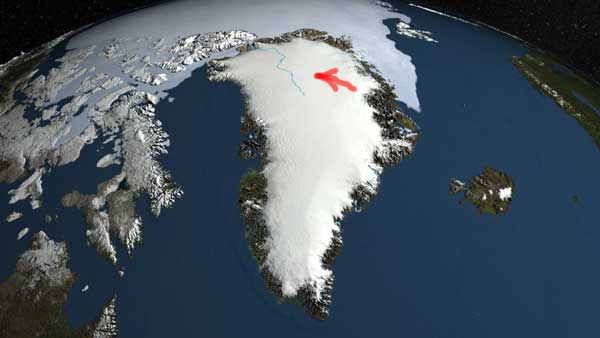Greenland’s Grand Canyon, also known as the Grand Canyon of Greenland and dubbed the Mega Canyon by some media outlets, is a canyon of record length that was discovered underneath the Greenland ice sheet, according to an announcement in August 2013 by NASA.
Hidden for all of human history, a 460 mile long canyon has been discovered below Greenland’s ice sheet. Using radar data from NASA’s Operation IceBridge and other airborne campaigns, scientists led by a team from the University of Bristol found the canyon runs from near the center of the island northward to the fjord of the Petermann Glacier.
A large portion of the data was collected by IceBridge from 2009 through 2012. One of the mission’s scientific instruments, the Multichannel Coherent Radar Depth Sounder, operated by the Center for the Remote Sensing of Ice Sheets at the University of Kansas, can see through vast layers of ice to measure its thickness and the shape of bedrock below.
The canyon is likely to have influenced basal water flow from the ice sheet interior to the margin. Jonathan Bamber, a geographer at University of Bristol, stated, “The distinctive V-shaped walls and flat bottom suggests water carved the buried valley, not ice.”

The canyon is more than 750 kilometres (466 mi) long, up to 800 metres (2,600 ft) deep and 10 kilometres (6 mi) wide, making it the longest canyon discovered on the Earth to date.
The canyon predates ice sheet inception and has influenced basal hydrology in Greenland over past glacial cycles.
It is estimated to be at least 4 million years old, possibly millions of years older. Its discovery was first reported in the journal Science on 30 August 2013, by scientists from the University of Bristol, University of Calgary and University of Urbino.
